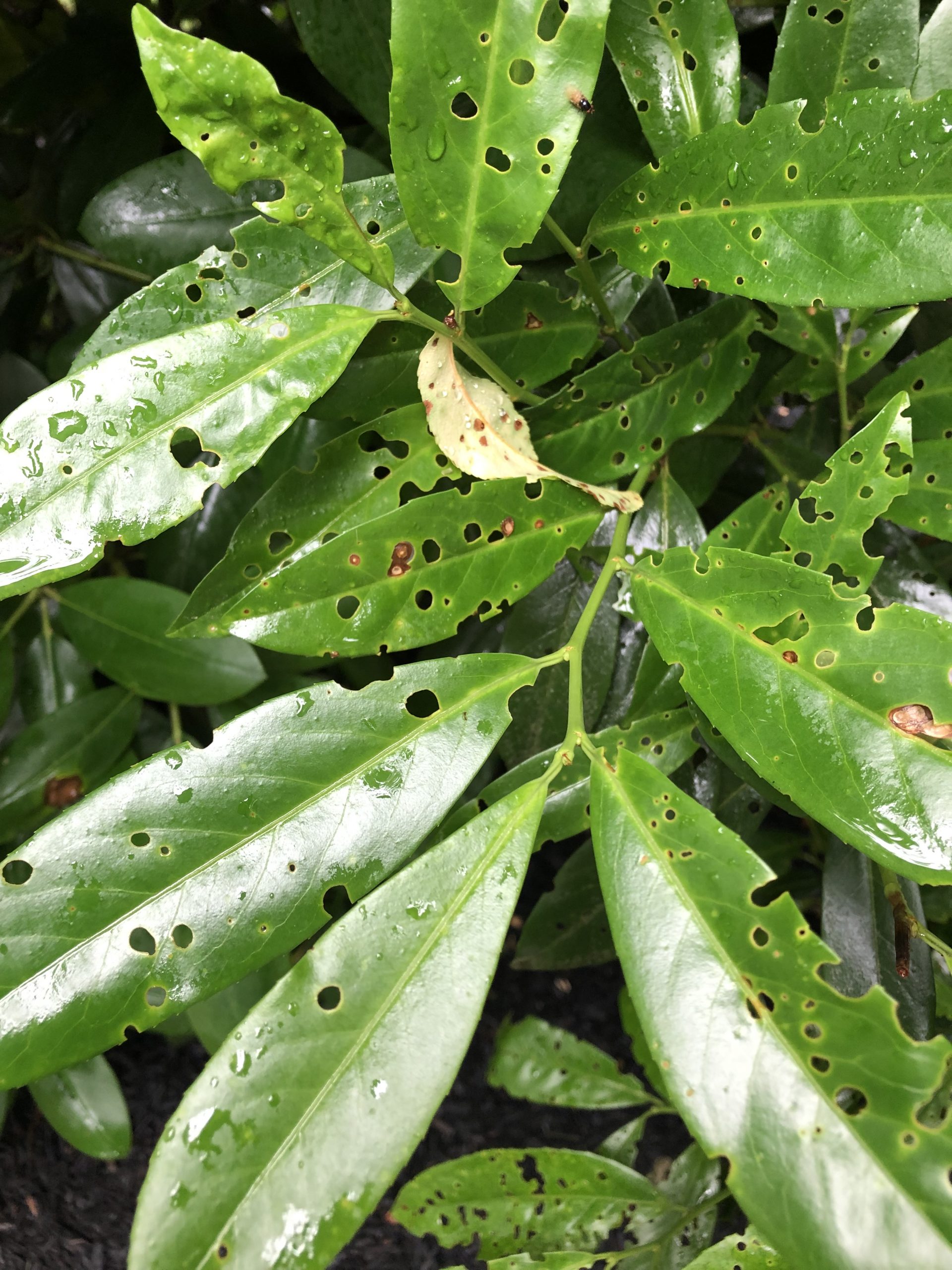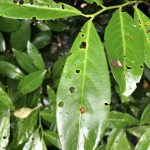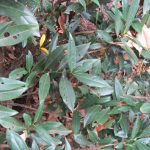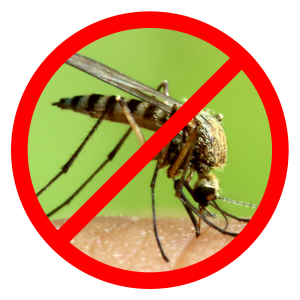Shot Hole Disease

Have your landscape plants ever looked like someone shot at the leaves with a shotgun? If so, it is possible that the plant has shot hole disease.
What is shot hole disease?
Shot hole disease, also known as Coryneum Blight, is a very common issue found on landscape plants in New Jersey. This disease is primarily found on cherries, plums, and laurels; however, depending on environmental conditions, it can be found on a variety of other species. Many people think the leaves are being eaten by an insect. The main difference between insect damage and shot hole disease is the shape of the holes. If the holes are generally irregular in shape, it could very well be insect damage. If the holes look more rounded, then shot hole disease could be the culprit. Shot hole disease favors wet conditions. The longer the leaves stay wet, the more likely it is for shot hole fungus to develop. The last few springs in New Jersey have been extremely favorable for shot hole fungus on landscape plants. Once the disease infects the plant tissue, reddish brown spots will develop on the leaf and they eventually fall out, leaving holes in the leaves.
Reducing wetness minimizes exposure
Since shot hole disease favors wet conditions, make sure your shrubs are not being watered via overhead irrigation, especially laurels. While it is important to water your plants, a dripline irrigation or soaker hose placed directly at the base of the plant is the most efficient method. Overhead irrigation allows the leaves to stay wet for extended periods which can provide optimal conditions for shot hole disease to thrive. If the affected plants are planted too close together or they have grown into each other, it is advised to selectively prune them in such a way to allow for better air flow. This will allow the leaves to dry in a reasonable amount of time. While there are some cultural practices you can do to help alleviate the conditions for shot hole disease to thrive, we cannot control Mother Nature. If the winter and spring produce abnormally wet conditions, then shot hole disease can be prevalent in the landscape on a variety of trees and shrubs.
Clean out debris!
Sanitation is key. For landscape plants, such as laurels, it is advised to rake up the debris and old leaves under and around the plants. The disease spores can ‘hibernate’ in the debris, waiting for optimal conditions before becoming active. Removing the debris will reduce the possibility of the disease forming.
What if my plants already have it?
If your landscape plants have shot hole disease, it is best to let it be, the damage can’t be repaired. The leaves will fall off at the end of the year or next spring’s growth will help hide the old infected foliage. However, if you have high-profile laurels or trees that get the disease year after year, then it would be prudent to speak with an arborist for care options like pruning and shot hole disease sprays with a fungicide.
In conculsion
Shot hole disease is regarded as a ‘cosmetic’ disease. This means the disease is a visual nuisance more than anything else. There are fungicides on the market that are labelled to treat for this disease, but the timing of the application is extremely critical. There is only a small window of opportunity to treat for this disease to achieve good control. For that reason, fungicide use should be left in the hands of a professional. Sound cultural practices are the way to go, do your best to avoid overhead watering and remove debris from under and around the plants.
If you are in our service area and have any questions or concerns about your trees and shrubs, feel free to contact us.






